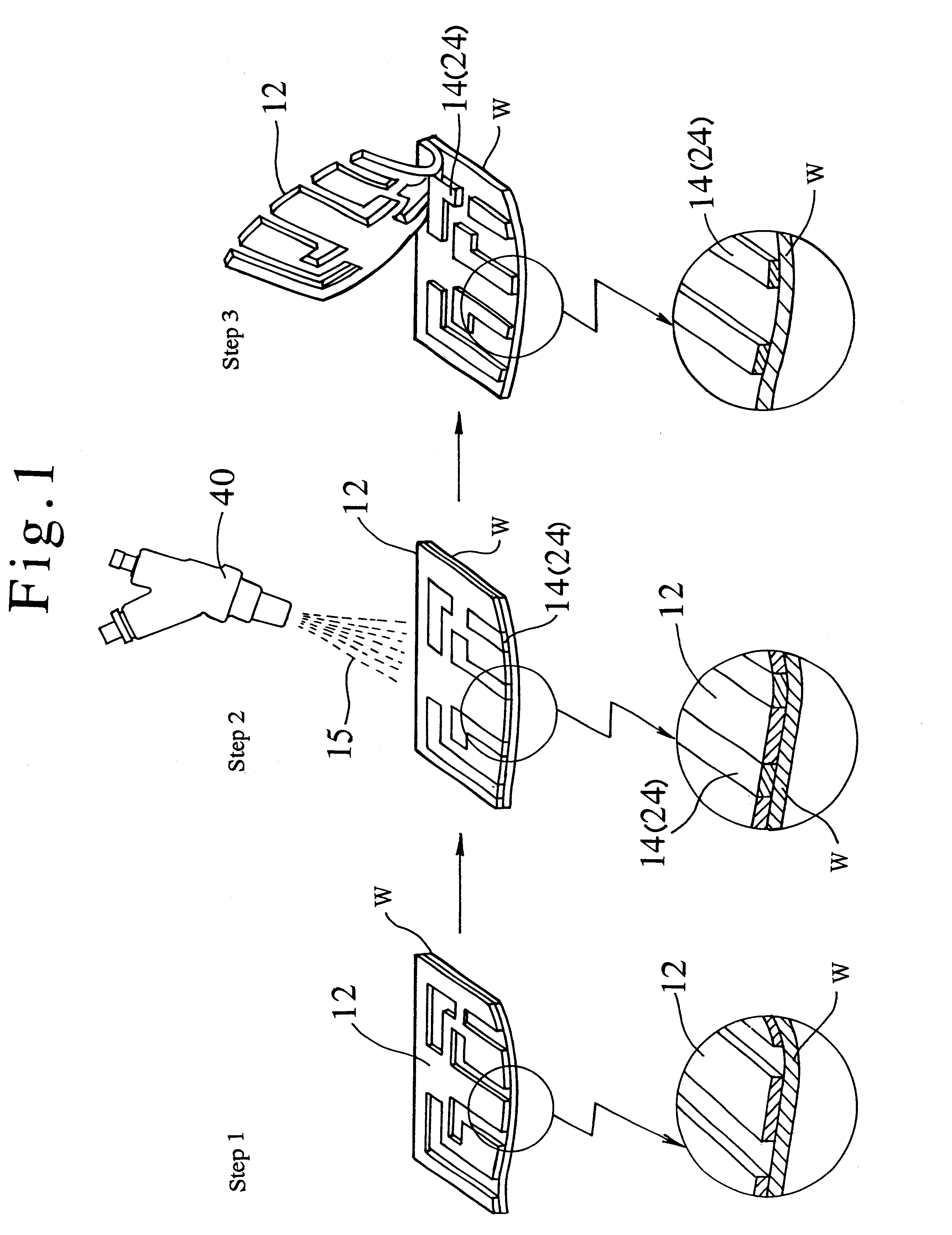Method for forming a metallic coat by impacting metallic particles on a workpiece
a technology of metallic particles and workpieces, applied in the direction of solid-state diffusion coatings, coatings, printed circuit manufacture, etc., can solve the problems of high cost, long time, and high adhesion of coats and etchings
- Summary
- Abstract
- Description
- Claims
- Application Information
AI Technical Summary
Benefits of technology
Problems solved by technology
Method used
Image
Examples
application example
As explained above, by means of the method in accordance with the present invention, various kinds of metallic coat, which has the uniform thickness as well as high strength of adhesion, can be adhered to the surface of workpiece. Hence, the present method can be applied to the following usage.
Application 1: Forming of Printed Circuit
This application is shown by the example, where silver coat 24 having a predetermined pattern was formed on the surface of ceramic substrate as a workpiece W by means of method in accordance with the present invention, and a printed circuit was formed by utilizing the silver coat 24.
As shown in FIG. 1, in this application, the surface of ceramic substrate was covered with a masking material 12 at its part where the silver coat 24 was not to be formed. Thus, the silver coat 24 was not formed on the masked part of surface.
Then, silver powders each having the average particle size of 45.mu. and the shape of substantial sphere were ejected to the partly mas...
example 1
After sandblasting with WA powders #220, coat was formed with metallic powders stated below, and then, masking material was removed.
example 2
After sandblasting with WA powders #220, masking material was removed and then, coat was formed with metallic powders stated below.
The thickness of coat formed on the above blast worked surface was thick or large. On the other hand, that of coat formed on the surface covered with the masking material was thin or small. Accordingly, on the engraved (sandblast worked) surface of glass, light and shade of color as well as stereoscopic view could be expressed.
PUM
| Property | Measurement | Unit |
|---|---|---|
| ejection pressure | aaaaa | aaaaa |
| ejection velocity | aaaaa | aaaaa |
| particle size | aaaaa | aaaaa |
Abstract
Description
Claims
Application Information
 Login to View More
Login to View More - R&D
- Intellectual Property
- Life Sciences
- Materials
- Tech Scout
- Unparalleled Data Quality
- Higher Quality Content
- 60% Fewer Hallucinations
Browse by: Latest US Patents, China's latest patents, Technical Efficacy Thesaurus, Application Domain, Technology Topic, Popular Technical Reports.
© 2025 PatSnap. All rights reserved.Legal|Privacy policy|Modern Slavery Act Transparency Statement|Sitemap|About US| Contact US: help@patsnap.com



